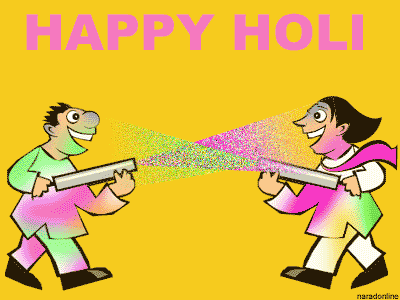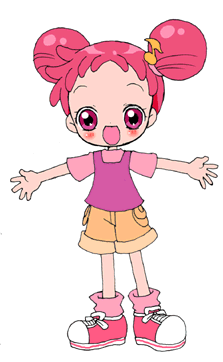IN DAYS of yore, there were communities of cannibals in India. They caused much havoc. They threatened the lives of many innocent people. One of them was Holika or Putana. She took immense delight in devouring children. Sri Krishna destroyed her and thus saved the little children. Even today, the effigy or figure of Holika is burnt in the fire. In South India, the clay figure of Cupid is burnt. This is the origin of the great festival of Holi.
It begins about ten days before the full moon of the month Phalgun (February-March), but is usually only observed for the last three or four days, terminating with the full moon. This is the spring festival of the Hindus. In the spring season all the trees are filled with sweet-smelling flowers. They all proclaim the glory and everlasting beauty of God. They inspire you with hope, joy and a new life, and stir you on to find out the creator and the indweller, who is hiding Himself in these forms.
Holi is known by the name of Kamadahana in South India, the day on which Cupid was burnt by Lord Siva.
Another legend has it that once upon a time an old woman's grandchild was to be sacrificed to a female demon named Holika. A Sadhu advised that abuse and foul language would subdue Holika. The old woman collected many children and made them abuse Holika in foul language. The demon fell dead on the ground. The children then made a bonfire of her remains.
Connected to this legend of the demon Holika is Bhakta Prahlad's devotion to Lord Narayana, and his subsequent escape from death at the hands of Holika. Prahlad's father, Hiranyakashipu, punished him in a variety of ways to change his devotional mind and make him worldly-minded. He failed in his attempts. At last he ordered his sister, Holika, who had a boon to remain unburnt even in fire, to take Prahlad on her lap and enter into the blazing flames. Holika did so. She vanished, but Prahlad remained untouched and laughing. He was not affected by the fire on account of the Grace of Lord Narayana.
This same scene is enacted every year to remind people that those who love God shall be saved, and they that torture the devotee of God shall be reduced to ashes. When Holika was burnt, people abused her and sang the glories of the Lord and of His great devotee, Prahlad. In imitation of that, people even today use abusive language, but unfortunately forget to sing the praises of the Lord and His devotee!
In North India, people play joyfully with coloured water. The uncle sprinkles coloured water on his nephew. The niece applies coloured powder on her aunt's face. Brothers and sisters and cousins play with one another.
Huge bundles of wood are gathered and burnt at night, and everywhere one hears shouts of "Holi-ho! Holi-ho!" People stand in the streets and sprinkle coloured water on any man who passes by, be he a rich man or an officer. There is no restriction on this day. It is like the April Fool's Day of the Europeans. People compose and sing special Holi songs.
On the festival day, people clean their homes, remove all dirty articles from around the house and burn them. Disease-breeding bacteria are thereby destroyed. The sanitary condition of the locality is improved. During the festival, boys dance about in the streets. People play practical jokes with passers-by. A bonfire is lit towards the conclusion of the festival. Games representing the frolics of the young Krishna take place joyously around a fire.
On the last day of Holi, people take a little fire from this bonfire to their homes. They believe that their homes will be rendered pure, and their bodies free from disease.
Nowadays, people are found indulging in all sorts of vices in the name of the Holi festival. Some drink intoxicating liquor like toddy and fall unconscious on the roads. They indulge in obscene speech as a result of drinking. They lose respect for their elders and masters. They waste their money in drink and dice-play. These evils should be totally eradicated.
Festivals like Holi have their own spiritual value. Apart from the various amusements, they create faith in God if properly observed. Hindu festivals always have a spiritual significance. They wean man away from sensual pleasures and take him gradually to the spiritual path and divine communion. People perform havan and offer to the gods the new grains that are harvested.
On such holy occasions there should be worship of God, Satsangs, and Kirtan of the Lord's Names, not merely the sprinkling of coloured water and lighting of bonfires. These functions are to be considered most sacred and spent in devotional prayers, visiting holy places, bathing in sacred waters, and Satsang with great souls. Abundant charity should be done to the poor. Then only can Holi be said to have been properly celebrated. Devotees of the Lord should remember His delightful pastimes on such happy occasions.
All great Hindu festivals have religious, social and hygienic elements in them. Holi is no exception. Every season has a festival of its own. Holi is the great spring festival of India. Being an agricultural country, India's two big festivals come during the harvest time when the barns and granaries of our farmers are full and they have reason to enjoy the fruits of their hard labour. The harvest season is a festive season all over the world.
Man wants relaxation and change after hard work. He needs to be cheered when he is depressed on account of work and anxieties. Festivals like Holi supply him with the real food and tonic to restore his cheer and peace of mind.
The religious element in the Holi festival consists of worship of Sri Krishna. In some places it is also called the Dol Yatra. The word dol literally means "a swing". An image of Sri Krishna as a babe is placed in a little swing-cradle and decorated with flowers and painted with coloured powders. The pure, innocent frolics of little Krishna with the merry milkmaids—the Gopis of Brindavan—are commemorated. Devotees chant the Name of Sri Krishna and sing Holi-songs relating to the frolics of little Krishna with the Gopis.
The social element during Holi is the uniting or "embracing" of the great and the small, of the rich and the poor. It is also the uniting of equals. The festival teaches us to "let the dead bury the dead". We should forget the outgoing year's ill-feelings and begin the new year with feelings of love, sympathy, co-operation and equality with all. We should try to feel this oneness or unity with the Self also.
Holi also means "sacrifice". Burn all the impurities of the mind, such as egoism, vanity and lust, through the fire of devotion and knowledge. Ignite cosmic love, mercy, generosity, selflessness, truthfulness and purity through the fire of Yogic practice. This is the real spirit of Holi. Rise from the mire of stupidity and absurdity and dive deep into the ocean of divinity.
The call of Holi is to always keep ablaze the light of God-love shining in your heart. Inner illumination is the real Holi. The spring season is the manifestation of the Lord, according to the Bhagavad Gita. Holi is said there to be His heart.
Posted on 3/5/2004 2:05:52 PM



















